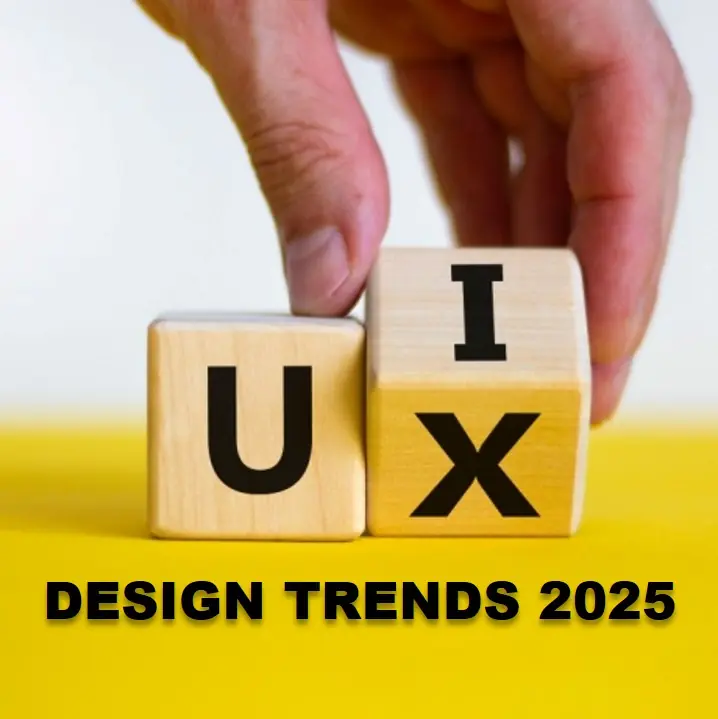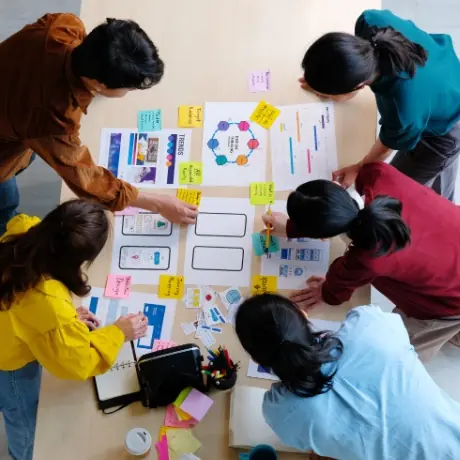As we step into 2025, the UI UX design trends 2025 emerge as a defining topic in the digital design world. With innovations reshaping how we interact with technology, understanding the latest UI UX design trends is essential for designers and businesses. From fresh design principles to groundbreaking user experience innovations, these trends set the stage for a more intuitive and engaging digital landscape.
In this article, we’ll explore everything from the basics of UI and UX design to the emerging UI UX design trends for 2025 trends that UX designers and creators must know. We’ll highlight new UI design concepts like Bento Box layouts, Parallax Scrolling, and Glassmorphism. Trends such as bold typography and Claymorphism will also take center stage. On the UX side, we’ll dive into proactive user experiences (PX), inclusive design principles, and banking UX trends. We’ll also discuss gamification, micro-interactions, and personalized user journeys.
Whether you’re a design enthusiast or a seasoned professional, these insights will help you stay ahead of the curve in 2025. Let’s dive into the future of UI UX design together!
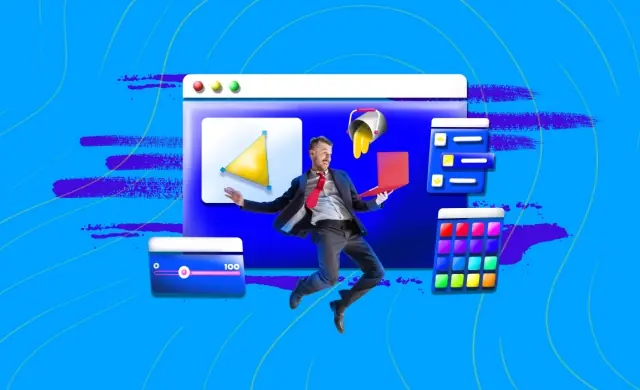
Understanding UI UX Design
UI design is all about how a product looks—its layout, colors, and fonts—to make its interface visually appealing. UX design, on the other hand, focuses on how it feels, making sure interactions are smooth, easy, and enjoyable. Together, they create seamless and engaging digital experiences.
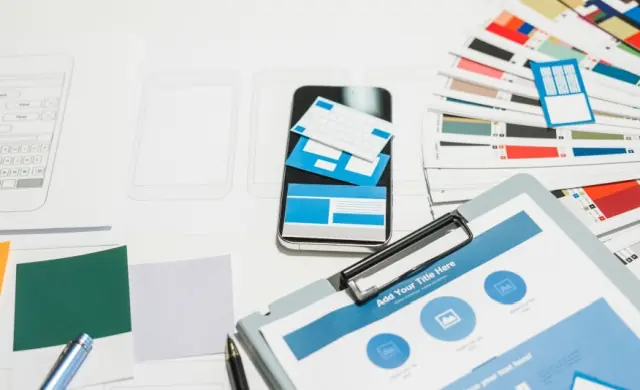
UI UX Design Trends for 2025: What’s New
As we approach 2025, the landscape of UI UX design is evolving with innovative trends that enhance user interaction and visual appeal. These emerging design elements focus on clarity, engagement, and personalization, setting new standards in digital design.

UI Design Trends for 2025
1. Bento Box Design Layouts
Inspired by traditional Japanese bento boxes, this layout arranges content into neat, self-contained sections. This bento box design enhances clarity and allows users to navigate information seamlessly, improving overall usability. As a UI trend, it serves as a practical design element that organizes content effectively.
2. Parallax Scrolling
Parallax scrolling involves background elements moving at a different speed than foreground content during scrolling, creating depth and engagement. When integrated into responsive design, this interface design technique guides users through content dynamically, exemplifying modern UI design.
3. Glassmorphism
Glassmorphism features frosted-glass effects, semi-transparent backgrounds, and subtle shadows, adding depth and a tactile feel to interfaces. This modern UI design trend enhances visual design by creating a sleek aesthetic, and improving visual hierarchy and focus.
4. Bold Typography
Utilizing oversized, attention-grabbing fonts, bold typography emphasizes key messages and creates a strong visual impact. This design element guides users’ attention and enhances readability, marking a significant UI trend in design for 2025.
5. Minimalism with Personality
This approach combines clean, uncluttered designs with unique, playful elements like asymmetry and interactive features. It maintains simplicity while infusing character, making interfaces both functional and engaging. UI designers embrace this minimalist design to achieve good design that resonates with users.
6. Claymorphism
Featuring soft, 3D elements with rounded edges and muted colors, claymorphism adds a tactile and approachable feel to designs. This user interface design style creates friendly and engaging interfaces, particularly in creative industries, making it an interesting design topic among the best UI practices.
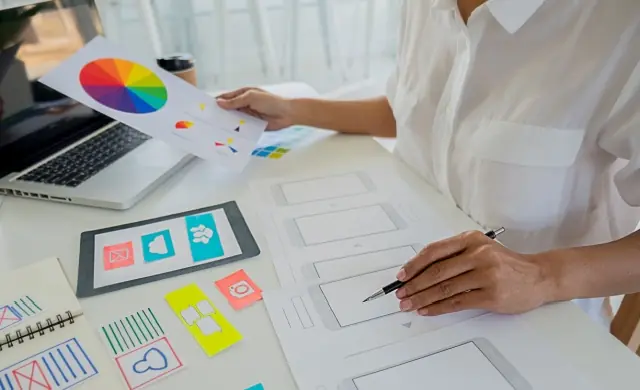
UX Design Trends for 2025
1. Proactive User Experience (PX)
Leveraging AI and machine learning, PX design anticipates user needs, offering suggestions and actions before users realize they require them. This anticipatory approach streamlines interactions and enhances user satisfaction, embodying interactive design principles. It ensures accessible design, aligning with modern UX and enterprise UX design standards.
2. Voice User Interfaces (VUI)
With the rise of voice-activated devices, integrating VUIs allows users to interact with products through speech. Designing intuitive voice interactions enhances accessibility and provides a hands-free user experience. This interaction design represents a UX trend that UX designers are increasingly adopting.
3. Inclusive Design Principles
Prioritizing accessibility and inclusivity ensures that products are usable by individuals with diverse abilities. Implementing features like high-contrast text, adjustable font sizes, and screen reader compatibility broadens audience reach and promotes diversity. Inclusive design is integrated throughout the design process, with the design team focusing on universal usability.
4. Gamification
Incorporating game-like elements such as points, badges, and progress tracks enhances engagement. Gamification transforms routine tasks into interactive experiences, increasing user retention and satisfaction. This user experience design approach is integrated into the design process, especially in mobile app design.
5. Personalized User Journeys
Utilizing data analytics and AI, designers can create tailored experiences that adapt to individual user preferences. Personalization fosters a deeper connection between the user and the product, enhancing relevance and engagement. This approach represents the future of UX, with design systems focusing on individualized user experience.
6. Micro-interactions and Motion Design
Small, subtle animations and responsive feedback enhance user interaction by providing intuitive cues and a sense of responsiveness. Micro-interactions and motion design contribute to a more engaging and human-centered user experience. As a top UX trend, this design takes inspiration from key trends in creating dynamic interfaces.
By embracing these powerful UI UX design trends for 2025, designers can create innovative, accessible, and engaging digital experiences that resonate with users in 2025 and beyond.
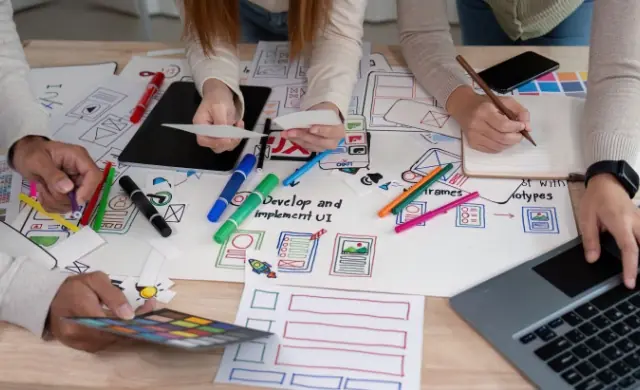
Explore 2025’s Leading UI UX Design Trends with ScreenRoot
The future of digital design looks promising, with UI UX design trends for 2025 set to redefine user interactions and aesthetics. From Bento Box layouts and Glassmorphism to gamification and proactive user experiences, these trends pave the way for more intuitive and engaging products. They focus on clarity, functionality, and personalization, making them essential for UX designers and businesses aiming to stay ahead.
Design teams are ready to embrace these trends and create experiences that resonate with diverse audiences. ScreenRoot, awarded UI UX Digital Agency of the Year 2024, earlier this year, is perfectly positioned to help businesses leverage these innovations. Our services include usability testing, enterprise app design, UX research, UX audits, and more. We craft tailored solutions incorporating the latest trends, ensuring every project aligns with your vision.
Explore our work here. For inquiries or consultations, WhatsApp us, email [email protected], or call 1800 121 5955 (India). Alternatively, fill out our Contact Form with your project details to connect with us. Let’s shape the future of digital design together!
